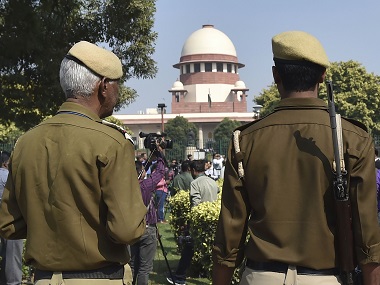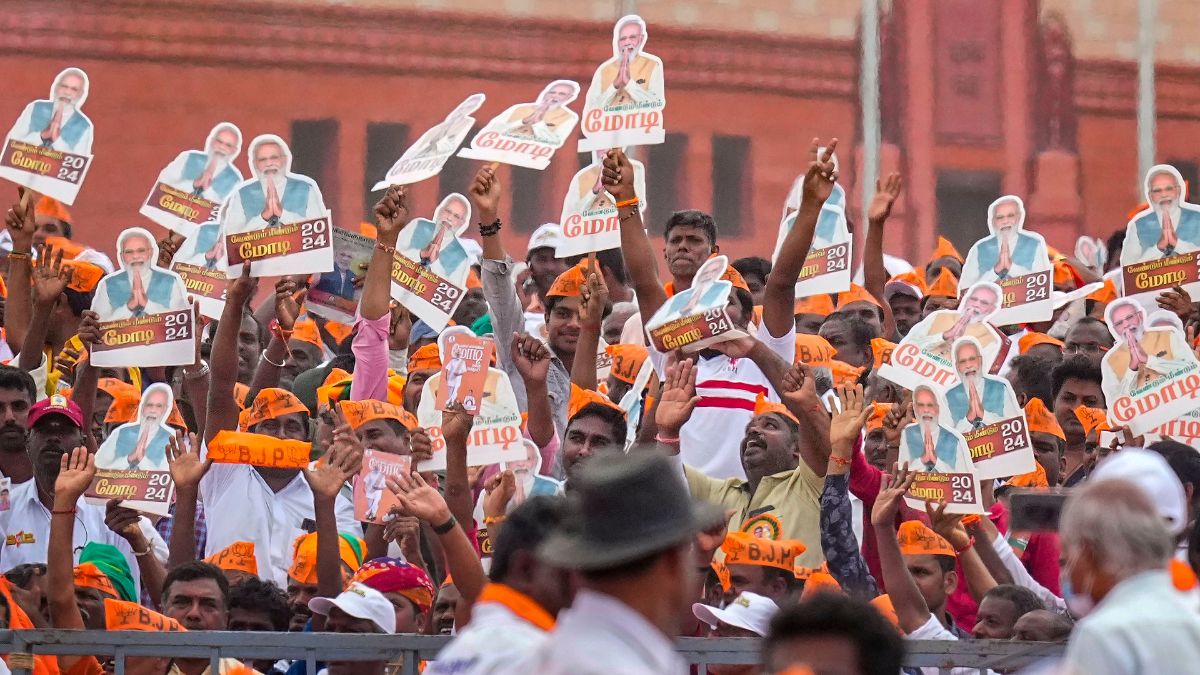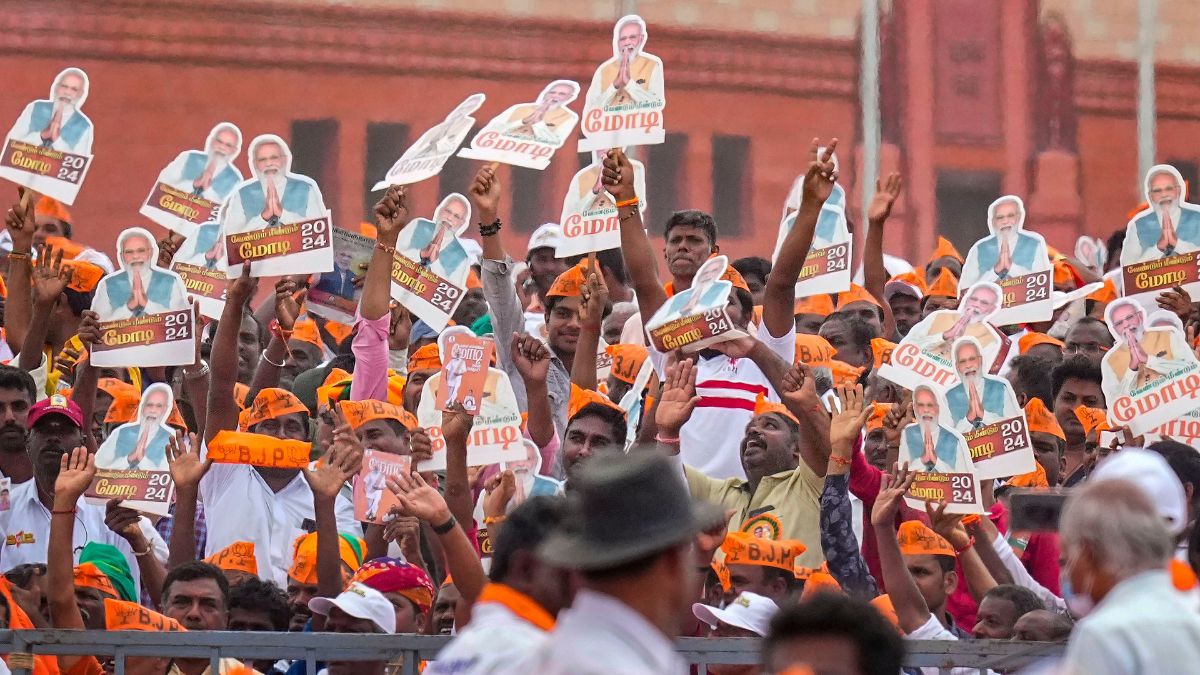On 9 November 2019, the Supreme Court of India handed down a judgment in the longstanding legal battle pertaining to the disputed land in Ayodhya, where the Babri Masjid structure stood. Hindus have long claimed that the location of the disputed land is the birthplace of Lord Ram whereas Muslim community has claimed that Mughal Emperor Babar ordered the construction of a mosque at the site for Muslims to pray.
In a unanimous verdict , the five-Judge Bench of the SC, which included the Chief Justice of India, declared that the Hindu community had an overall better claim in regard to possession of the 1,500 square yard area than the Muslims, thereby ordering the Central Government to hand over the possession of the premises to a body or trust for construction and management of a temple and other matters.
Since the announcement of the judgment, there have been many misrepresentations, half-truths and lies intended at undermining the judgment and, obliquely, the Republic of India
Lie 1: The decision is merely on the basis of religious beliefs of Hindus
Firstly, it cannot be repeated enough that this was a dispute of title, ie, who owned or had rights to use/occupy the disputed premises. To quote the SC:
Firstly, it cannot be repeated enough that this was a dispute of title, ie, who owned or had rights to use/occupy the disputed premises. To quote the SC:
“From Shaheed Ganj to Ayodhya, in a country like ours where contesting claims over property by religious communities are inevitable, our courts cannot reduce questions of title, which fall firmly within the secular domain and outside the rubric of religion, to a question of which community’s faith is stronger.” [Paragraph 205>
Supreme Court explicitly recognised the beliefs of both the Hindus and Muslims, but only and only to the extent that (a) the beliefs exist; and (b) such beliefs are held in good faith.
Both parties tried to claim title to the disputed premises through several arguments. Primarily, Hindus relied on the archaeological findings regarding the existence of a Hindu temple below Babri Masjid. Supreme Court rejected it stating it “cannot entertain claims that stem from the actions of the Mughal rulers against Hindu places of worship in a court of law today.” [Paragraph 652>
Muslims relied on the fact that Babur ordered building of the mosque which was an express grant of title to the land in favor of Muslims. The Supreme Court rejected this claim as well since there was no documentary evidence conferring title in the form of the grant of the land underlying the mosque back in 1528.
Therefore, in absence of historical records in regard to ownership or title to the land, the case (which, to repeat, was a title suit) depended upon who had a greater ‘possessory title’ to the disputed area which, in SC’s words, meant a determination of “the nature and use of the disputed premises as a whole by either of the parties”. In determining so, the court had to factor in the “length and extent of the use”. [Paragraph 771>
Therefore, what was relevant wasn’t religious belief, but exercise of religious practice. How else would ‘possessory title’ over a disputed place of worship be decided?
Some of the main factors which weighed in SC’s decision were:
- There was no evidence that the mosque was used for offering namaz from its construction by Emperor Babar in 1528 AD until around 1856-57. The lawyer for the Waqf Board admitted this as well.
- The Moazzin of the Babri Mosque, in a complaint filed in 1858 against Nihang Singh who allegedly organized a hawan puja and erected a symbol of ‘Sri Bhagwan’ within the premises of the mosque, admitted that the symbol of Janmasthan had been there for hundreds of years and Hindus did puja inside the three-domed structure. This, in addition to accounts provided by travelogues of actual worship by Hindus at the Janmasthan, provided, on “preponderance of probabilities”, evidence of worship by Hindus prior to even the British annexation of the Oudh (Ayodhya) province in 1849.
- In 1856-57, due to the riots which broke out between Hindus and Muslims in Ayodhya, the then British government set up a railing in the courtyard purely to maintain law and order which resulted in bifurcation of the courtyard. Hindus immediately set up the Ramchabutra, Sita Rasoi and other religious structures in the outer courtyard which, SC stated, provided evidence of them having “settled possession” of the outer courtyard. [Paragraph 742>
- This bifurcation did not mean that Hindus gave up their right to worship in the inner courtyard (the area below the three-dome structure). Witness statements indicated that, even when Hindus stood outside the railing, they offered worship in the direction of the Garbh Grih (birthplace of Lord Ram) which was under the central dome in the inner courtyard. Therefore, despite the bifurcation, the inner courtyard was not exclusively for Muslims and its use was a matter of dispute.
- The inner courtyard was a landlocked part of the premises which could not be accessed other than going through the outer courtyard which, as SC noted, was in control of the Hindus. [Paragraph 773>
- British government, in 1877, opened an additional door to the outer courtyard to facilitate entry of significantly increasing Hindu devotees which, in SC’s words, was an “indicator of the extensive nature of their use to offer worship”. [Paragraph 742>
The decision by the Allahabad High Court in 2010 (which the SC was hearing in appeal) was held to be legally unsustainable since it sought to divide the possession of the disputed area in three parts with one-third part going to Muslims. In addition to legal grounds, SC rejected this due to the fact that “dividing the land will not subserve the interest of either of the parties or secure a lasting sense of peace and tranquility” [Paragraph 799>
On balance of probabilities, a recognised principle in law, SC held that Hindus had a better claim of possession in regard to the disputed premises after applying settled principles of evidence.
Lie 2: The SC has turned a blind eye to the demolition of Babri Masjid and has sanctified violence
This is a serious misreading of the judgment. None of the major incidents which resulted in desecration of the mosque in the past 160 odd years led the SC to give the Hindu claim any greater superiority.
The act by Nihang Singh in 1858 was categorised as unlawful by SC, but that did not result in Muslims abandoning their right to offer namaz in the three-domed structure. It merely demonstrated that both Hindus and Muslims continued to claim their right to worship in the inner courtyard.
In 1934, when riots broke out resulting in damage to the mosque located in the inner courtyard, Hindus were fined. SC, in fact, concluded that the resulting measures taken by the Muslim community ensured that there was no abandonment by Muslims of the mosque as a place for offering namaz.
In 1949, a group of 50-60 Hindus sought forcible entry into the three-dome structure to install idols. This led to the desecration of the mosque and ouster of Muslims. The inner courtyard was attached in proceedings pursuant to civil procedure laws.
To the contrary, both events – 1934 and 1949 – as well as the Babri Masjid demolition of 1992 were held by SC to be a “serious violation of the rule of law” [Paragraph 788> and did not result in Hindus getting any superior rights.
In fact, these instances were instrumental in SC noting that, during the pendency of the cases, “Muslims have been wrongly deprived of a mosque which had been constructed well over 450 years ago” [Paragraph 798>. In exercise of its powers to do complete justice under Article 142 of the Constitution of India, it ordered the State to allocate 5 acres of land to the Muslim community.
As the final arbiter of law, SC had to decide who had possessory title to the disputed premises regardless of whether the mosque continued to exist. Based on the evidence over a period of time starting from prior to the British annexation, SC granted possessory title in favor of Hindus.
Lie 3: SC’s decision is based on archaeological findings which aren’t conclusive
Again, patently false.
SC noted that the Archaeological Survey of India report could not answer a critical question whether a Hindu temple had been demolished to pave way for the construction of Babri Masjid. This, in addition to other inconclusive findings, led the SC to conclude that “a finding of title cannot be based in law on the archaeological findings which have been arrived at by ASI." [Paragraph 788>
In other words, the reason SC went into the archaeological findings in great detail was simply to reject reliance upon it to determine the question of title by either side and, therefore, title to the land needed to be decided on “settled legal principles and applying evidentiary standards which govern a civil trial”. [Paragraph 788>
Lie 4: SC ordered the Narendra Modi government to construct the temple, something the government of a secular republic must not get involved in
The Narendra Modi government shall not be constructing the temple.
In 1993, the Parliament of India passed a law Acquisition of Certain Area at Ayodhya Act, 1993 due to which the Central Government acquired the disputed premises. SC, in 1994, upheld this law (it invalidated another provision in the law which does not relate to acquisition of land). Therefore, Central Government became the acquirer/owner of the premises.
However, SC also stated that, under this law, the role of the Central Government was limited to being a statutory receiver responsible for the management and administration of the premises to maintain status quo as it existed then. Once the final decision was made by courts of India in the title suit matter, the Central Government had to handover possession of the disputed premises accordingly.
Therefore, due to this law, SC directed the Modi government to devise a scheme to set up a trust or such other mechanism on handing over the disputed premises to such a body or a trust.


)




)
)
)
)
)
)
)
)